L20: Arthropods II
1/50
There's no tags or description
Looks like no tags are added yet.
Name | Mastery | Learn | Test | Matching | Spaced |
|---|
No study sessions yet.
51 Terms
summary:
hexapoda (insecta)
-vast majority of species
-found in all environments (less commonly-marine)
-many forms
-complex body: 3 tagmata - head, thorax, abdomen
how many legs does the thorax have?
3 pair
how many wings does the thorax have?
2 pairs
which type of insect is most abundant?
-beetles
what are the 3 tagmata of insecta?
-head
-thorax
-abdomen
why are insects the champions of terrestrial environment? (8)
-size
-exoskeleton
-excretory system
-advanced resp system
-advanced nervous system
-advanced sensory system
-internal fertilization
-resistant eggs
champion traits:
size
-small
champion traits:
exoskeleton
-provides protection against enviro
-jointed
-hardened locomotory appendages (legs and wings)
champion traits:
excretory system
-composed of tubules that pass through the body
-extract water from waste
-nitrogen water excreted as uric acid
champion traits:
advanced resp system
-spiracles open to outside
-tracheae (tubules) ramify thru body (direct oxygen supply to tissues)
Champion traits:
Advanced sensory system
– Antenna
– Compound eyes
– Cerci in cockroaches
Insect evolution is connected to what?
Plant evolution
subclass:
Apterygota
-invasion of land and appearance of first hexapods
-primatively wingless insects
-mostly simple mouths
modern day apterygotes
-collembola: springtails
-thysanura: silverfish
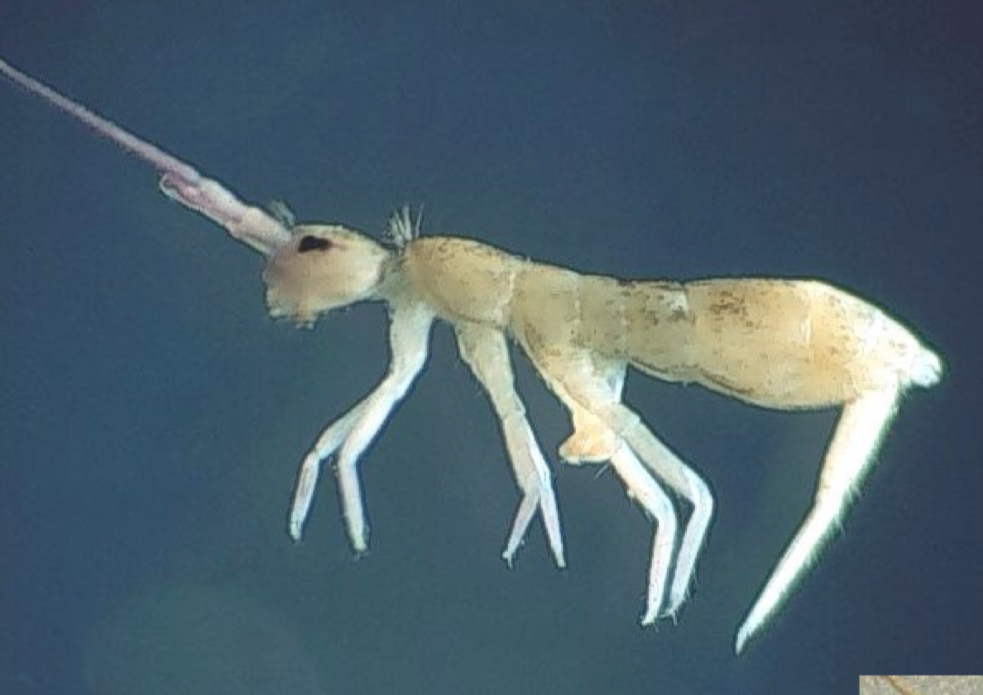
apterygotes
collembola - springtail
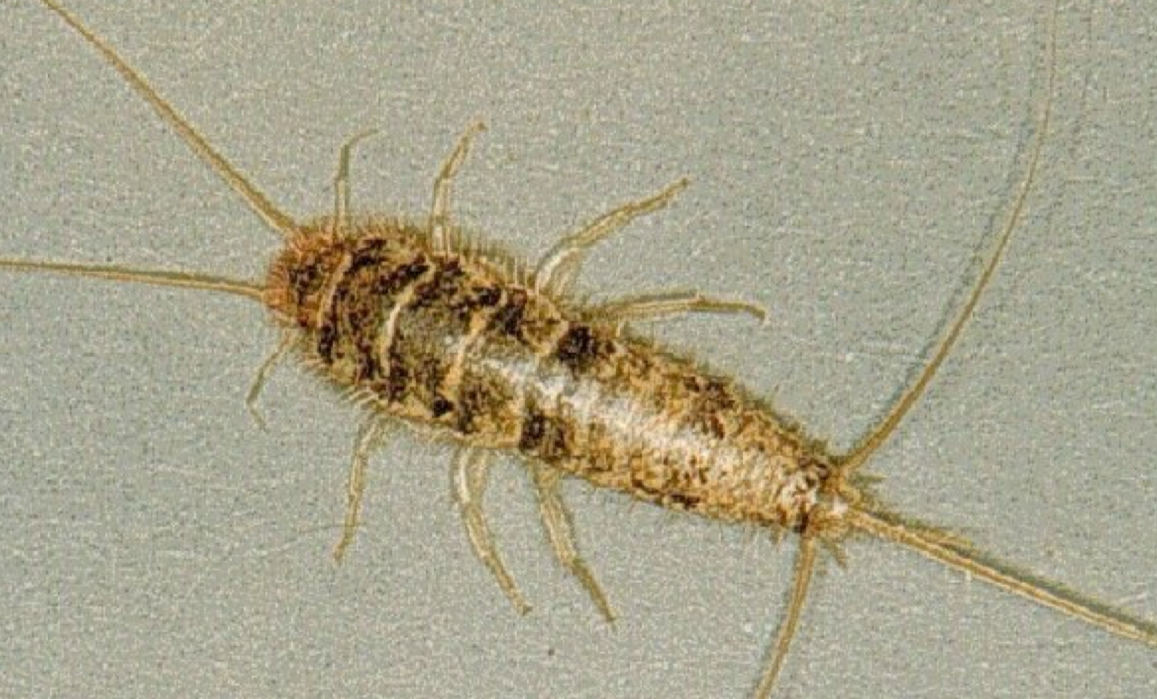
apterygotes
thysanura - silverfish
subclass:
Palaeoptera (3)
-evolution of wings (350 mya)
-simple insects, simple development
-wings did not fold over abdomen
modern day palaeoptera
-odonata: dragonflies
-ephemeroptera: mayflies
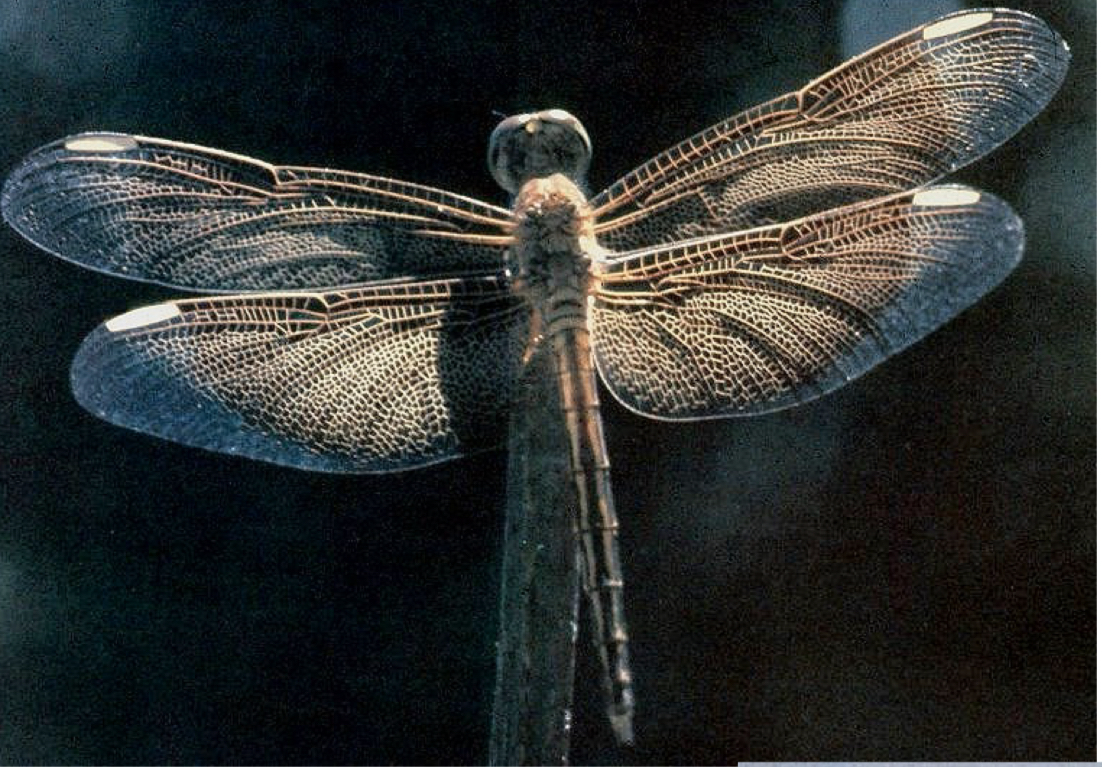
modern day Palaeoptera
odonata: dragonflies
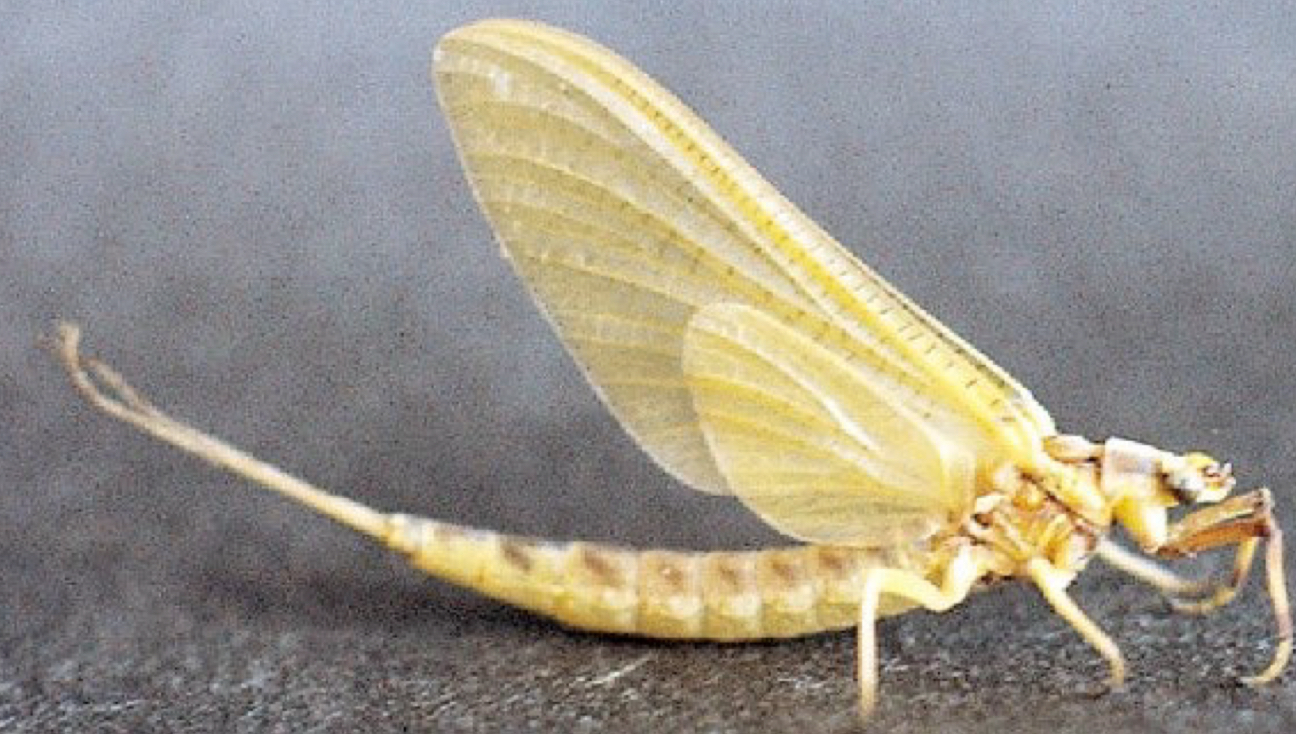
modern day Palaeoptera
-ephemeroptera: mayflies
subclass:
Orthopteroida
-development of wings that fold over abdomen
Orthopteroida:
Orthoptera
-grasshoppers
-locusts
Praying mantis
Cockroaches
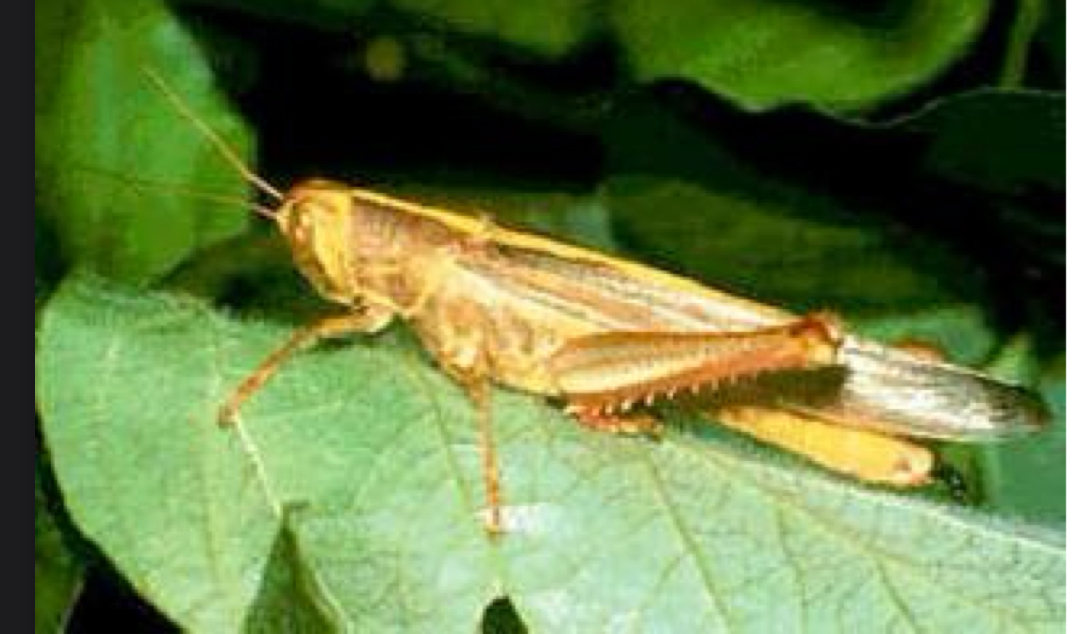
Orthopteroida
Orthoptera - grasshoppers, locusts
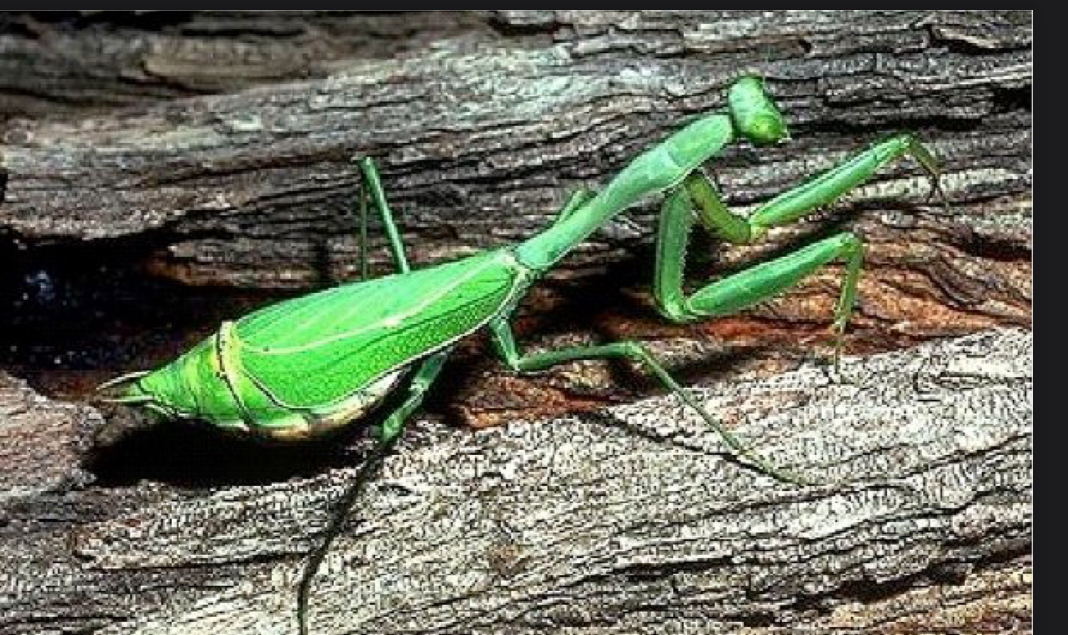
Orthopteroida
Mantodea - praying mantis
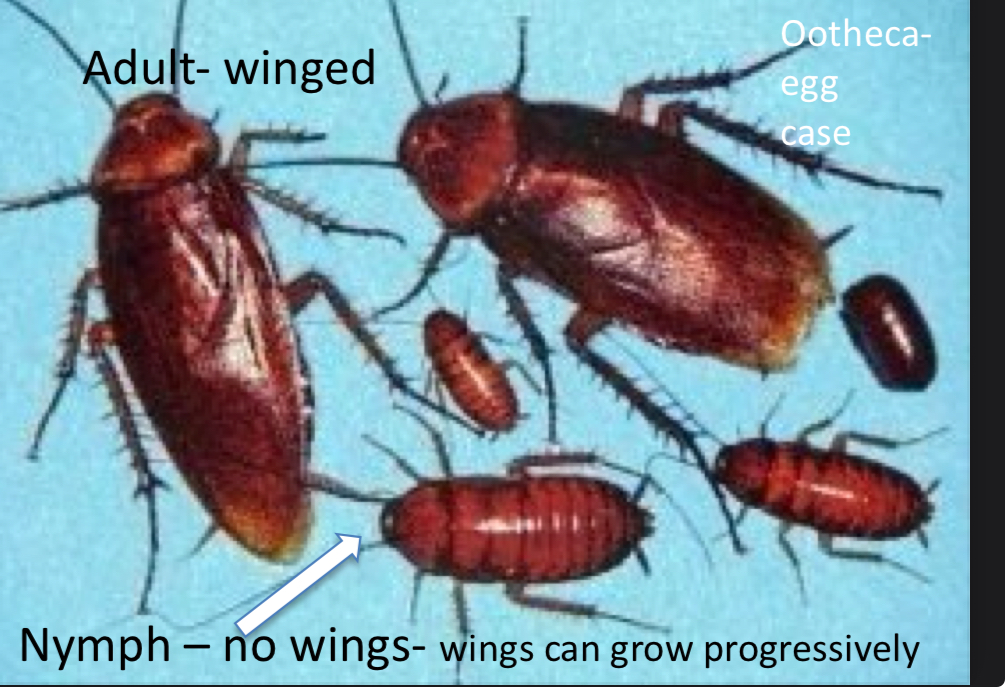
Orthopteroida
Blattodea - cockroaches
definition:
ootheca
-cockroach egg case
wings:
cockroaches
-adults have wings
-nymphs (juveniles) do not
Importance of subclasses Hemipterioda, Neuropteroida, Hymenopteroida, Panorpoida
– Enhanced innervation
– Two lineages: simple development, complete metamorphosis
What are the lineages the enhanced innervation subclasses?
– Those that maintain simple development
– Those with complete metamorphosis
Definition:
hemimetabolous
Maintain simple development
Their life cycle consists of egg juvenile and adults
Definition:
holometabolous
Complete metamorphosis
Hemipteroida:
Juvenile form
– Nymph
– Look like adults, but lack wings
– Not sexually mature
– Molt to grow
Hemipteroida:
Adult form
– Wings
– Sexually mature
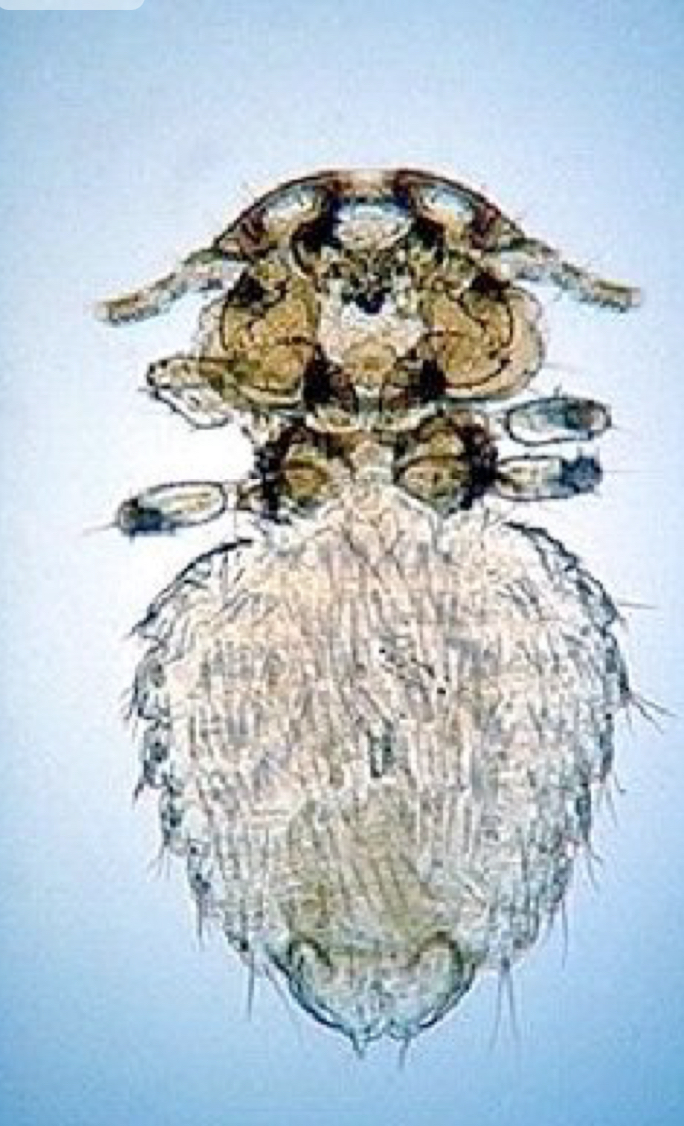
Hemipteroida
mallophaga, anoplura: lices
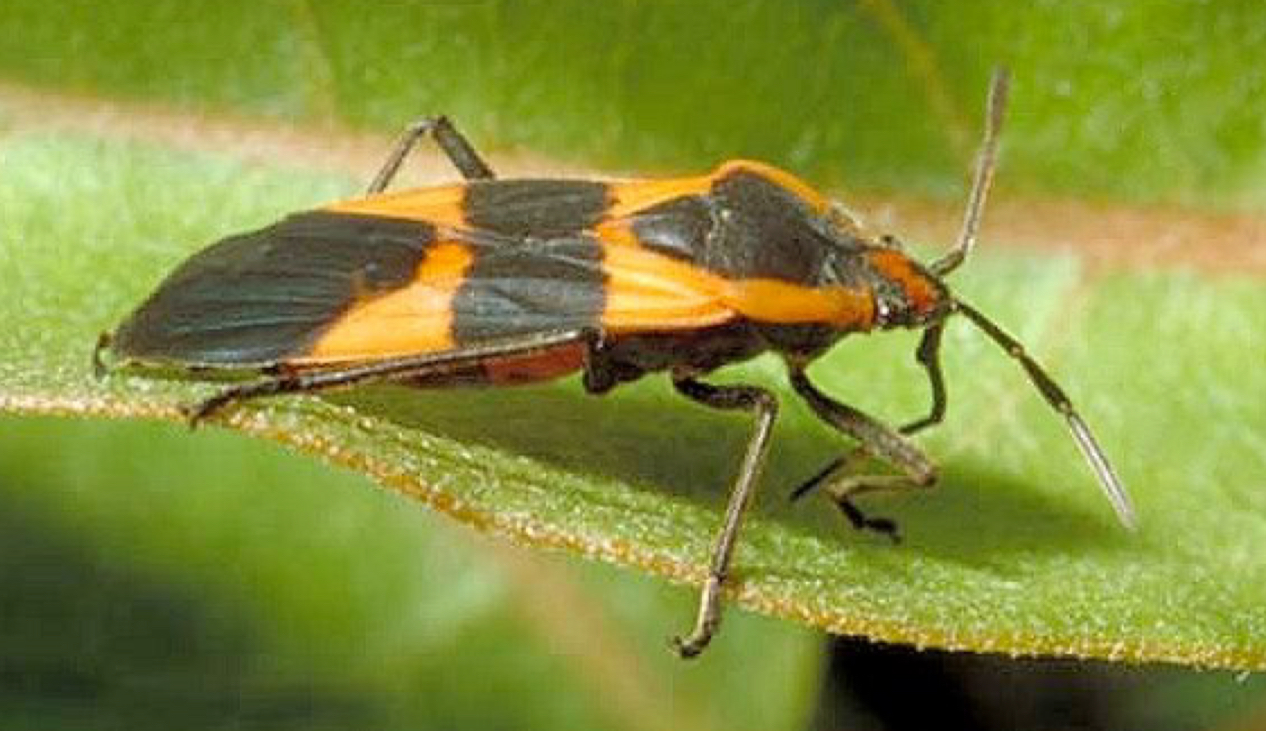
Hemipteroida
hemiptera: bugs, aphids
Hemipteroida:
Hemiptera
-bugs, aphids
-plant feeders
– Some parasites
Which Hemipteroida Hemiptera are parasites?
– Bedbugs
– kissing bugs
Chagas disease
– Caused by a trypanosome so from the Americas (Trypanosoma cruzi)
-chronic disease – scarring and swelling of heart, liver, G.I.
– Occurs mostly in South America, but also now US
Transmitted by assessment or Kissing Bugs
What transmits Chaga disease?
– Assassin or kissing bugs
– Triatominae
- Rhodnius species
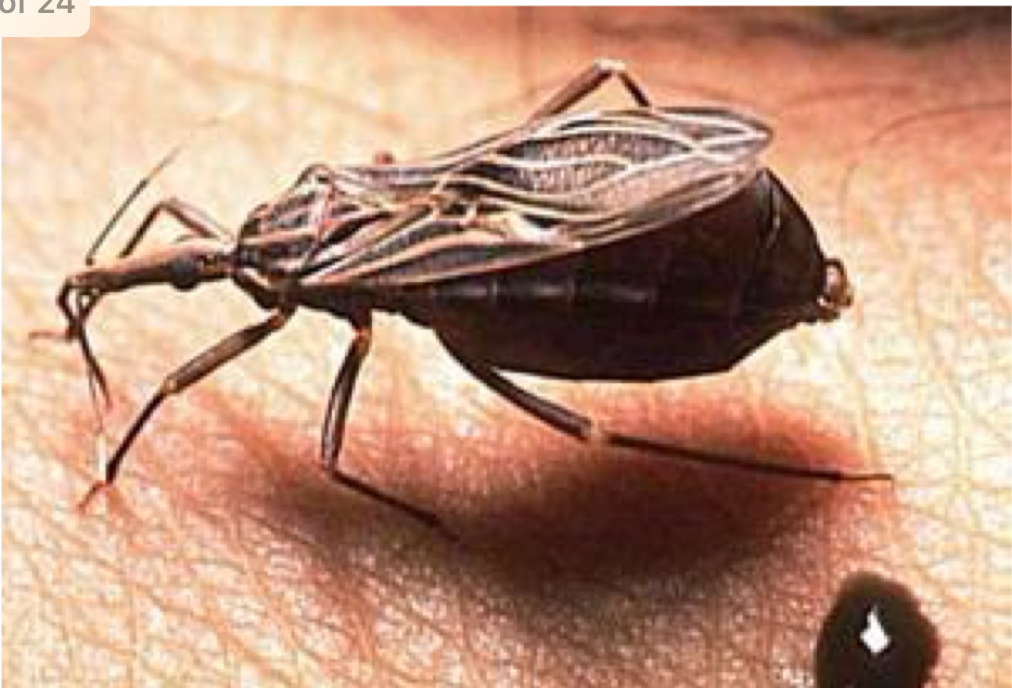
Trypanosoma cruzi
-causes Chagas Disease
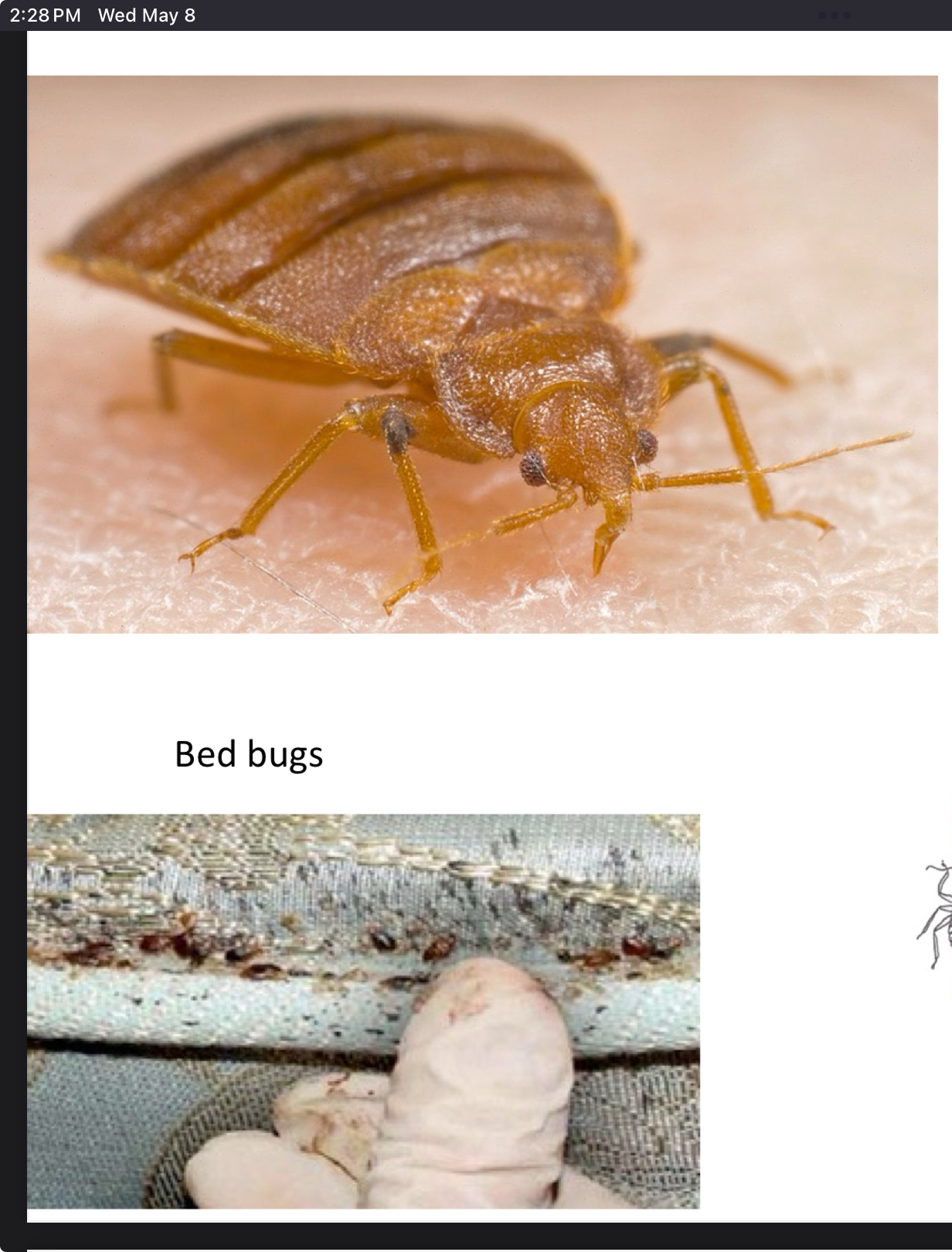
Bed Bugs
which three Insecta subclasses show true metamorphis?
-Neuropteroida
-Hymenopteroida
-Panorpoida
Definition:
Holometabolism
– Involves true metamorphosis
Holometabolism:
Larva
– Specializes in feeding, growth, and development
– Molts to grow into pupates
Holometabolism:
pupa
– A transitional phase
– Internal
-quiescent (period of inactivity)
-larva develops to sexual adult
Holometabolism
Adult
– Specializes in reproduction, dispersion, egg laying
– Can be feeding or non-feeding
What are the advantages of true metamorphosis?
– Allows adults to occupy a completely different habitat from the larva
– Enables larva and adults to exploit different food resources
– Metamorphosis allows insects to escape from temporary habitats
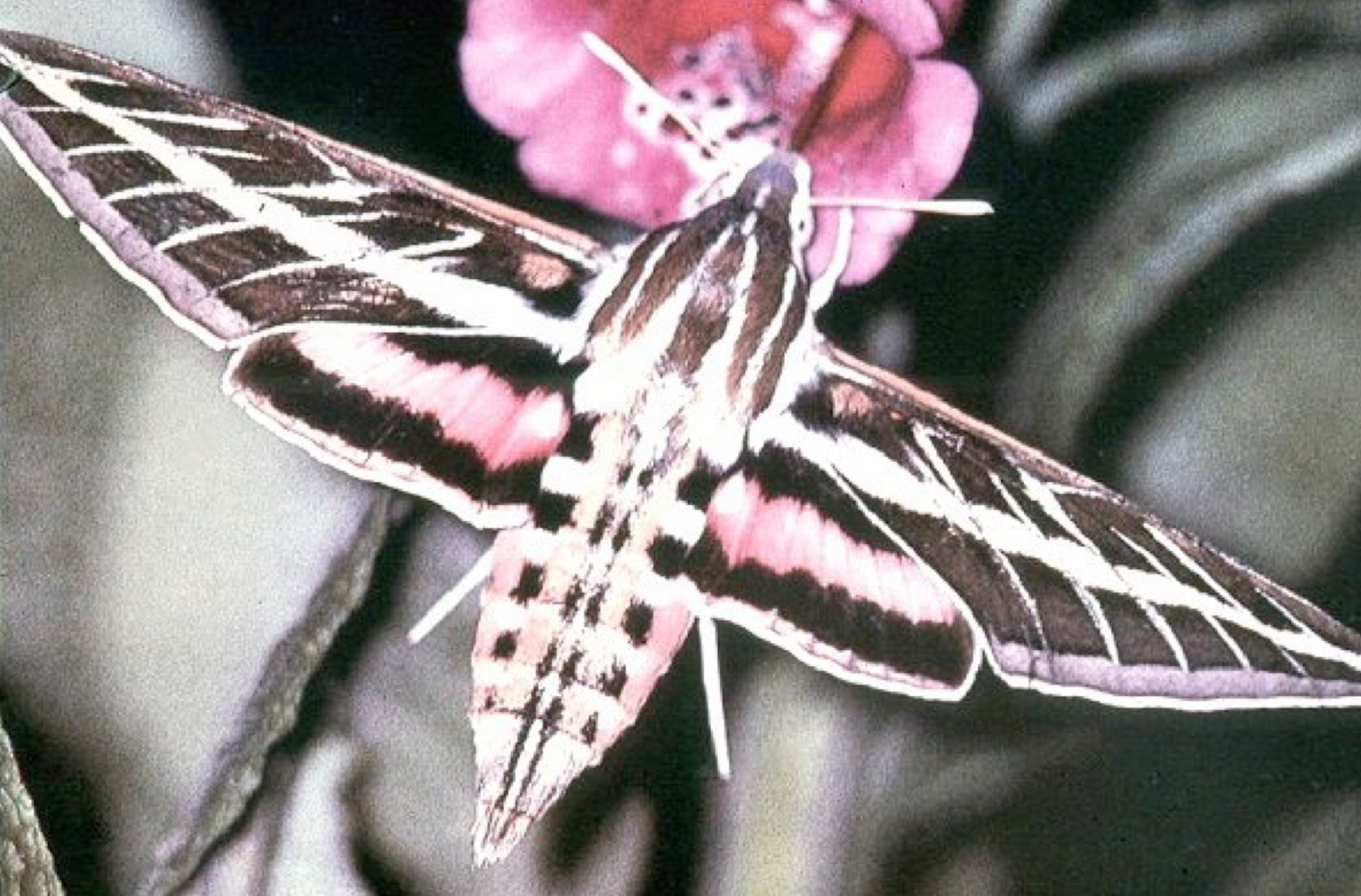
Lepidoptera - moths, butterflies
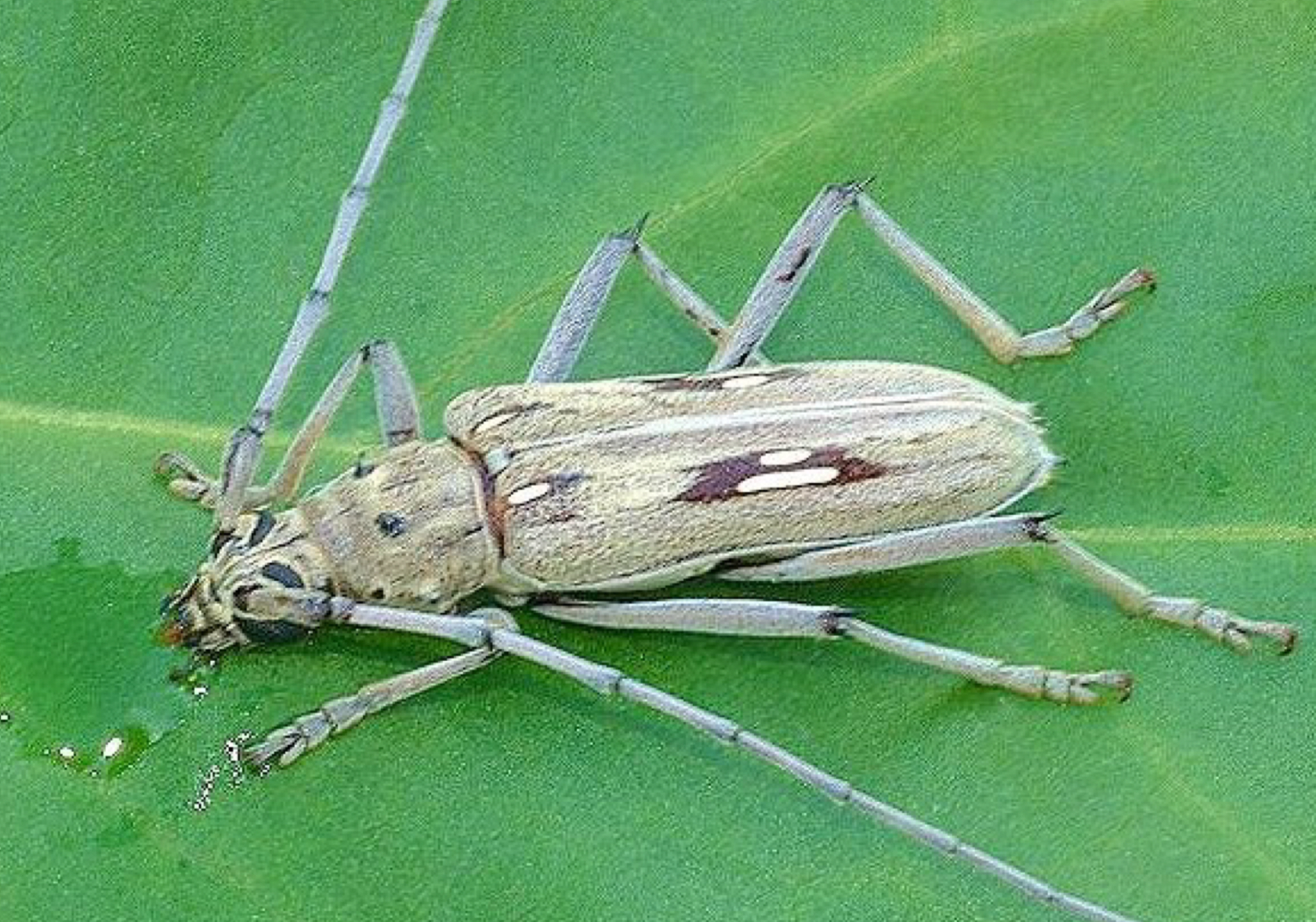
Coleoptera - beetles, weevils
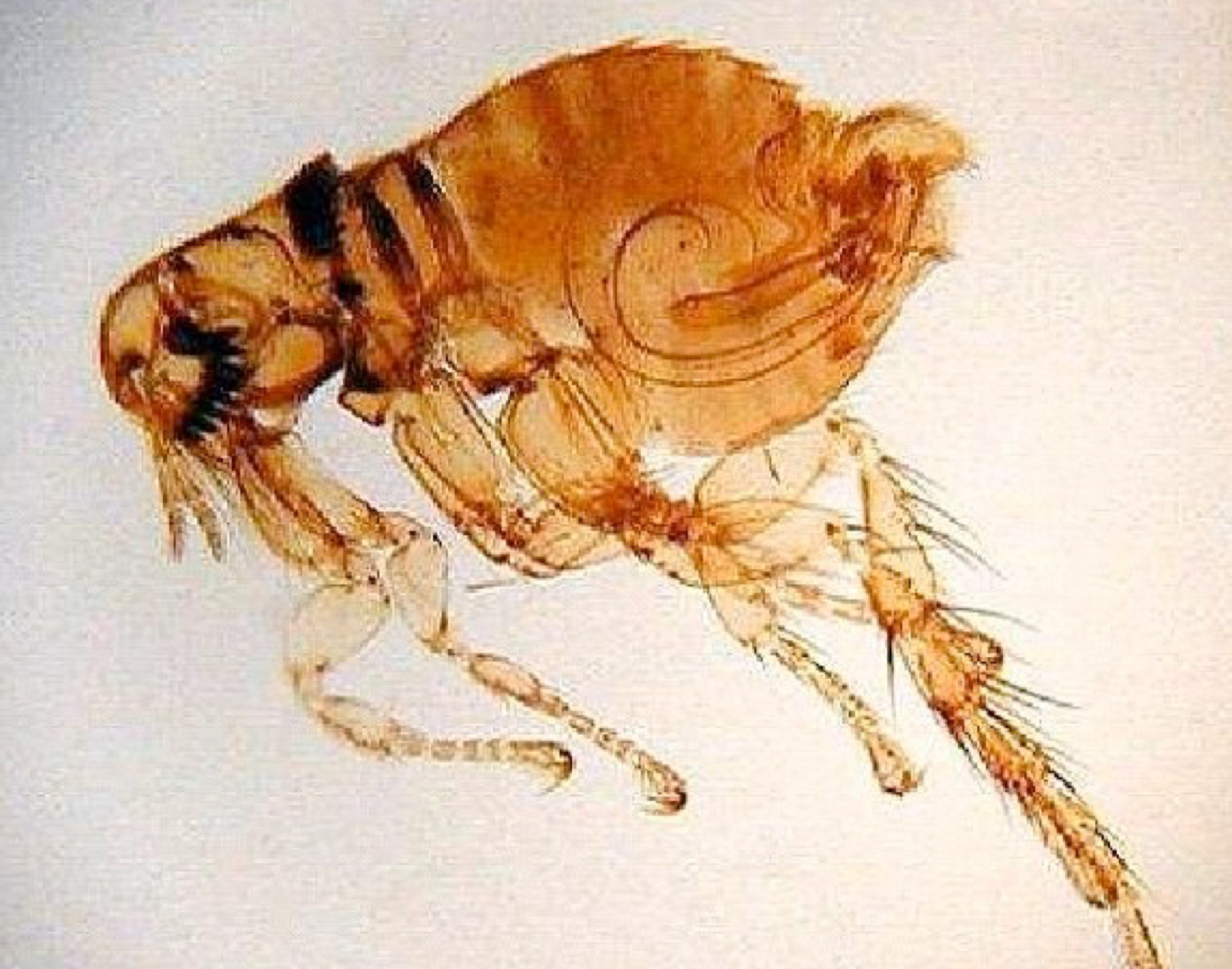
Siphonaptera - fleas
NO wings
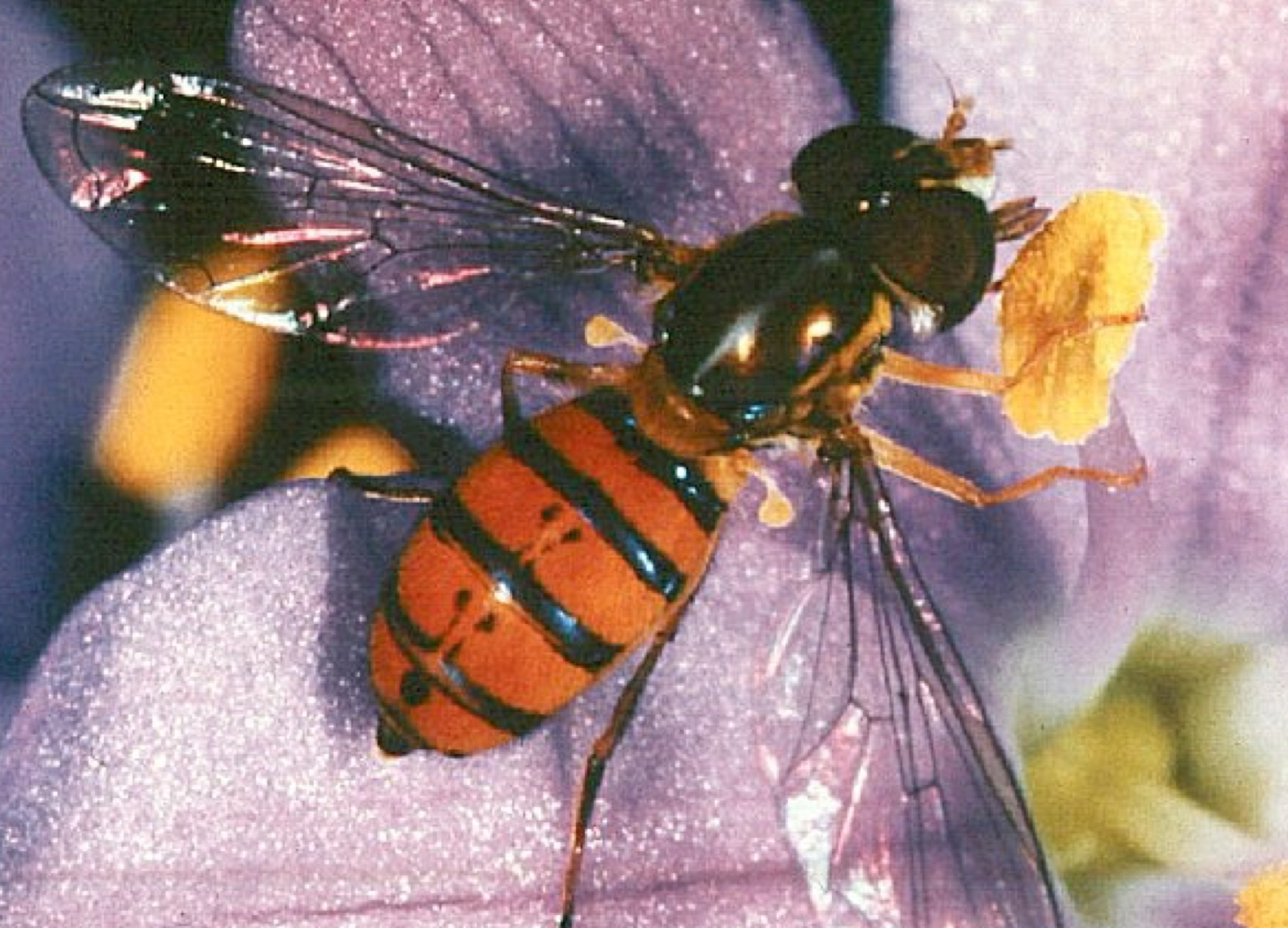
Diptera - flies, mossies